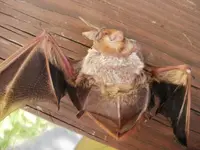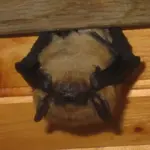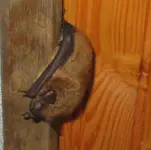White Nose Fungus is a terrible thing. I work with bats all year long in CT and RI, but mostly between April and Oct, removing colonies from houses. When I started 20 years ago, there were huge colonies of Little Browns. I can't remember the last Little Brown's I've evicted. Big browns keep me busy all season, but even those colonies are not like they once were. One good point about bats in a home, the big browns like to winter over in man made dwellings, so those aren't susceptible to the fungus. Only a small percentage of them hibernate in the homes though. (I just received a winter bat call two minutes ago). Sometimes they get active in low temps, usually because the house is kept too warm, but they'll be fine until spring when we can start evicting them.
We started seeing the decline in numbers about 10 years ago. I still have the same amount of work, but the colony sizes are just much smaller. Our bats are those two species, and they only avg one pup per season. So, it's a long recovery to get back to the numbers of the past.
Bats save somewhere around a billion dollars a year in produce, eating a variety of insects such as corn moths. Not to mention the mosquitoes that have Zika, EEE, Malaria, West Nile, etc. But, they only eat night time, soft bodied, flying insects.
Anyone that has them in their attics, I strongly suggest getting a professional to remove them and not do it on your own, to prevent entombing them or locking them out during cold weather, or evicting while pups are present (june through mid Aug in the northeast). At the right time of year, they will find a secondary roost (probably your neighbor's home, lol).
Other CT bats are the Pipestrel, Hoary, Red, Silver Haired, and one more I can't remember. I've only seen the Big Brown, Little Brown and one Red Bat that my son hit with his truck and it stuck to the windshield wiper.
This is the unfortunate little Red that was hit. A biologist traveled an hour and a half to pick it up. You can still see her last meal, a white moth.







